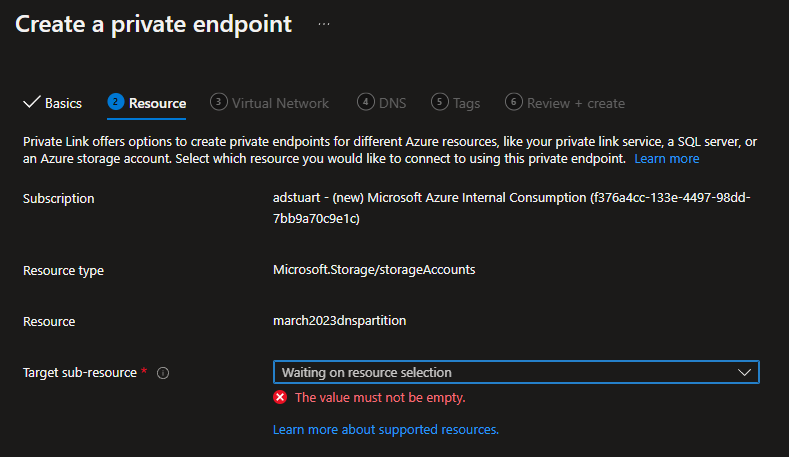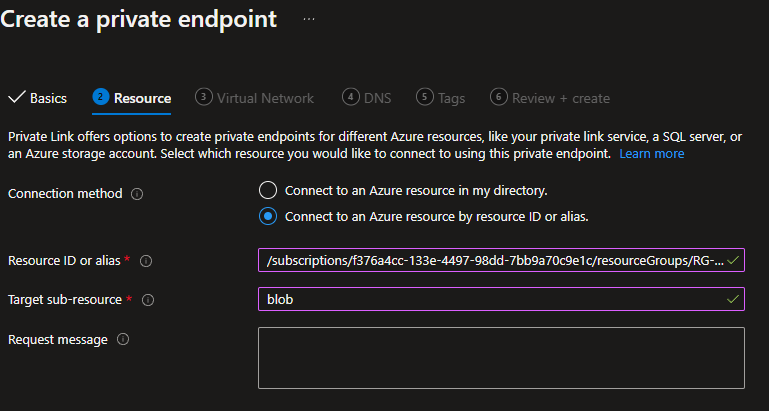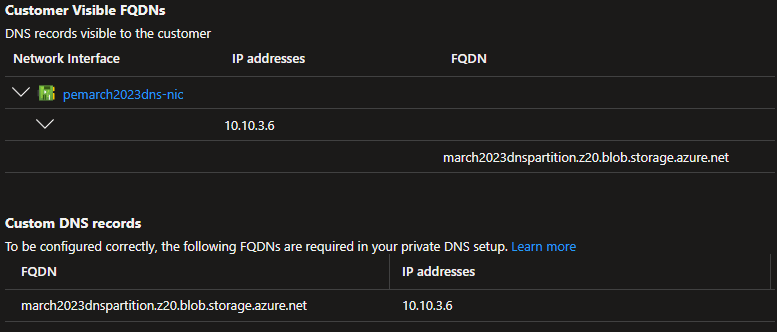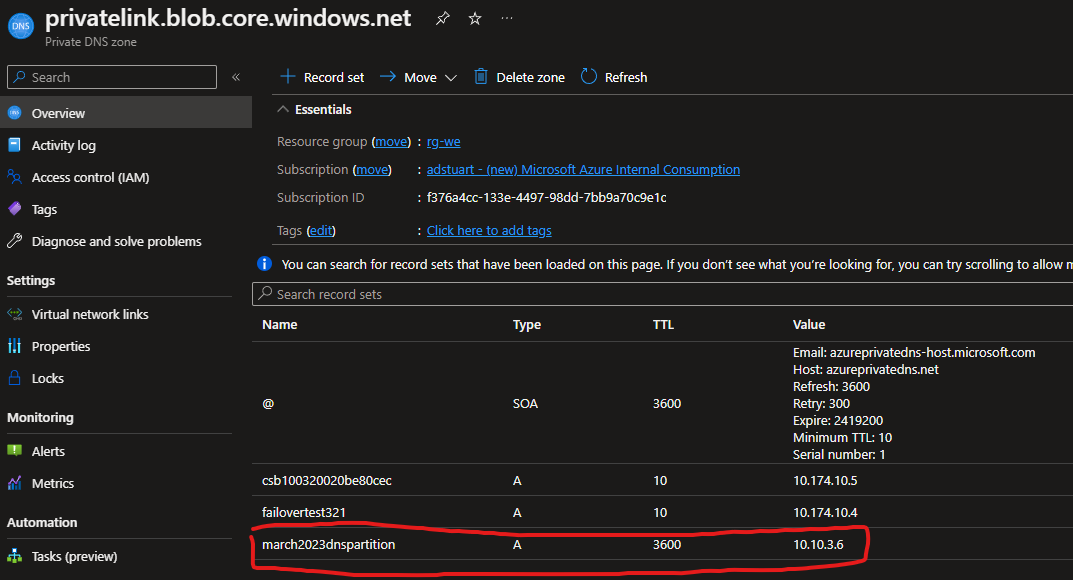A short guide detailing how to enable Private Endpoints for Azure Storage accounts using the new DNS partition feature.
Official blog post and context on why you may want to use this feature (in preview at time of writing, March 2023) - https://techcommunity.microsoft.com/t5/azure-storage-blog/public-preview-create-additional-5000-azure-storage-accounts/ba-p/3465466
Official docs - https://learn.microsoft.com/en-us/azure/storage/common/storage-account-overview#azure-dns-zone-endpoints-preview
Generally, when you deploy a storage account, we get a predefined endpoint in the format of:
myaccountname.blob.core.windows.net
With this new feature, your end up with a new format, e.g.:
myaccountname.z18.blob.storage.azure.net
This subtle change in DNS prefix creates a hurdle for Azure DNS Private Zones integration, when using Private Link. Note that here within the official Azure Private Link FQDN list, we only specify zones for privatelink.blob.core.windows.net which would not match our suffix when using this feature of myAccountname.[dnszone].[service type].storage.azure.net wherein [dnszone] can range from z00 to z99.
Register for the preview and create your storage account with the feature flag enabled.
adam [ ~ ]$ az extension add -n storage-preview
adam [ ~ ]$ az storage account create -n march2023dnspartition -g RG-WE -l westeurope --dns-endpoint-type AzureDnsZone
Note the output with flag enabled and new syntax suffix.
...
"dnsEndpointType": "AzureDnsZone",
...
"primaryEndpoints": {
"blob": "https://march2023dnspartition.z20.blob.storage.azure.net/",
Note if you navigate to your newly formed Storage Account in the portal and try and create a Private Endpoint from the Networking blade, this will fail, even if using the custom portal URL for this feature.
Instead, we can navigate to the standard PL creation experience in the portal, and specify the Resource ID of our storage account, with required sub-resource (e.g. Blob).
This will not allow you to automagically generate the required Azure DNS Private Zone, therefore we have to fix the DNS.
Note how the PE is create successfully, but we lack the required Azure Private DNS zone config to get this working in an automated fashion (without manually editing host records).
The normal Private Link CNAME insertion still happens in Public DNS when you associate the Private Endpoint to the storage account. We can verify this be querying the FQDN of our Storage Account:
march2023dnspartition.z20.blob.storage.azure.net. 60 IN CNAME march2023dnspartition.privatelink.blob.core.windows.net.
march2023dnspartition.privatelink.blob.core.windows.net. 60 IN CNAME blob.ams09prdstr07a.store.core.windows.net.
blob.ams09prdstr07a.store.core.windows.net. 60 IN A 20.60.223.100
To fix this, we manually create an A record in our (likely already pre-existing) Azure Private DNS zone used for privatelink.blob.core.windows.net
If you created another Storage Account (or many more) (probably you are, if you are using this feature) then what happens if you get an account with the FQDN:
march2023dnspartition.z99.blob.storage.azure.net
Well now we have a problem, because this would also CNAME to the same privatelink FQDN e.g.
march2023dnspartition.z99.blob.storage.azure.net. 60 IN CNAME march2023dnspartition.privatelink.blob.core.windows.net.
march2023dnspartition.privatelink.blob.core.windows.net. 60 IN CNAME blob.ams09prdstr07a.store.core.windows.net.
blob.ams09prdstr07a.store.core.windows.net. 60 IN A 20.60.223.100
This is never an issue, because the initial storage account name string always must be unique, so regardless of the dnszone number (1-99) we always get a unique CNAME, and therefore unique A record in privatelink.blob.core.windows.net, despite the initial FQDN coming from a different public zone format.



